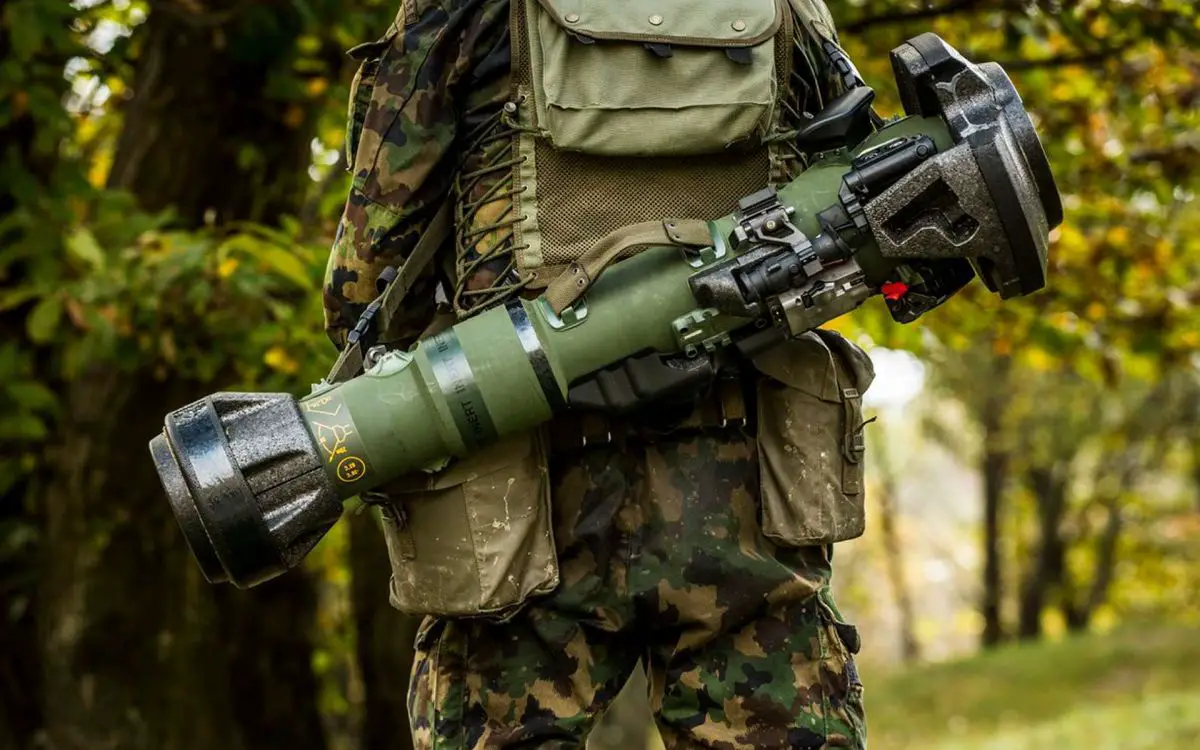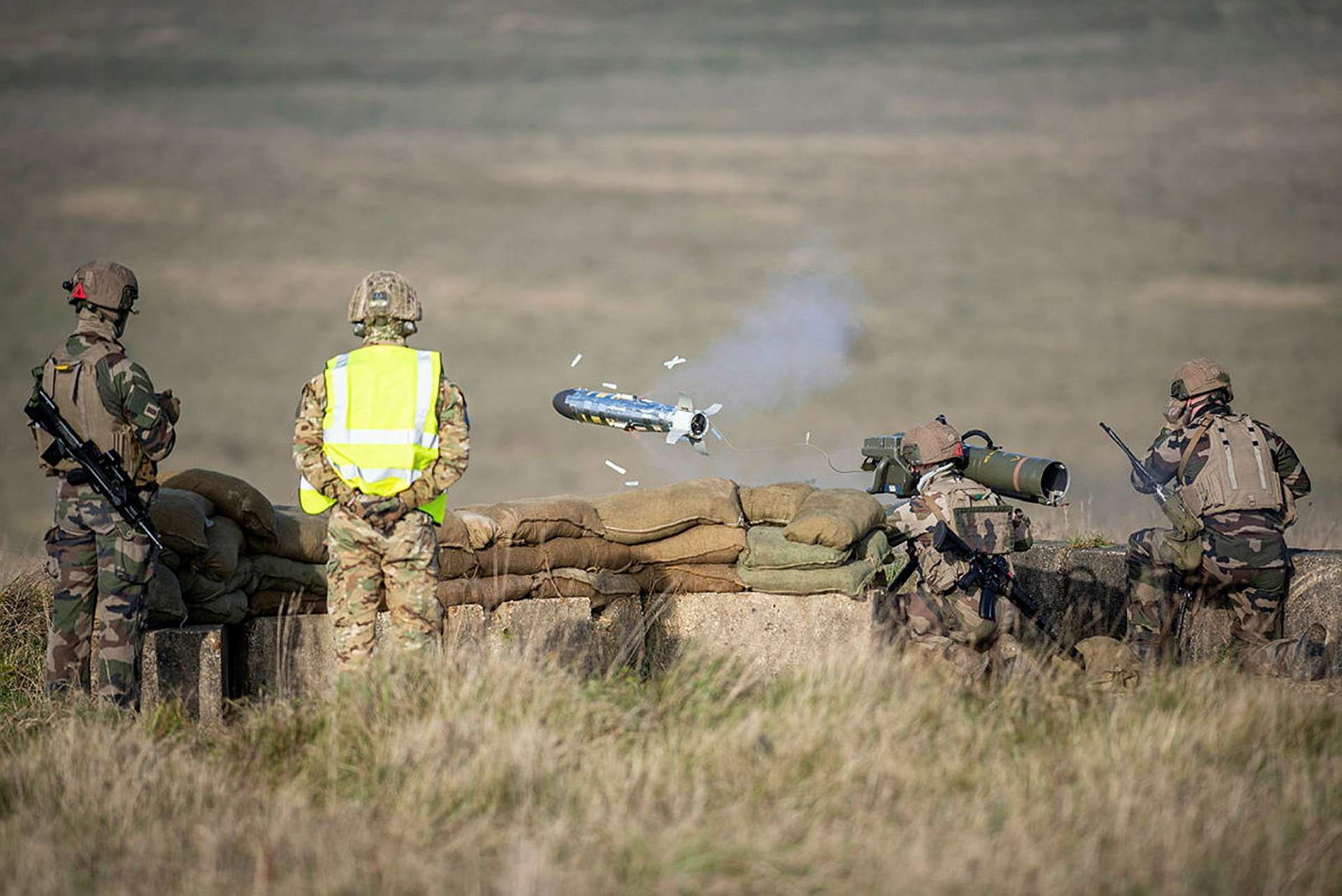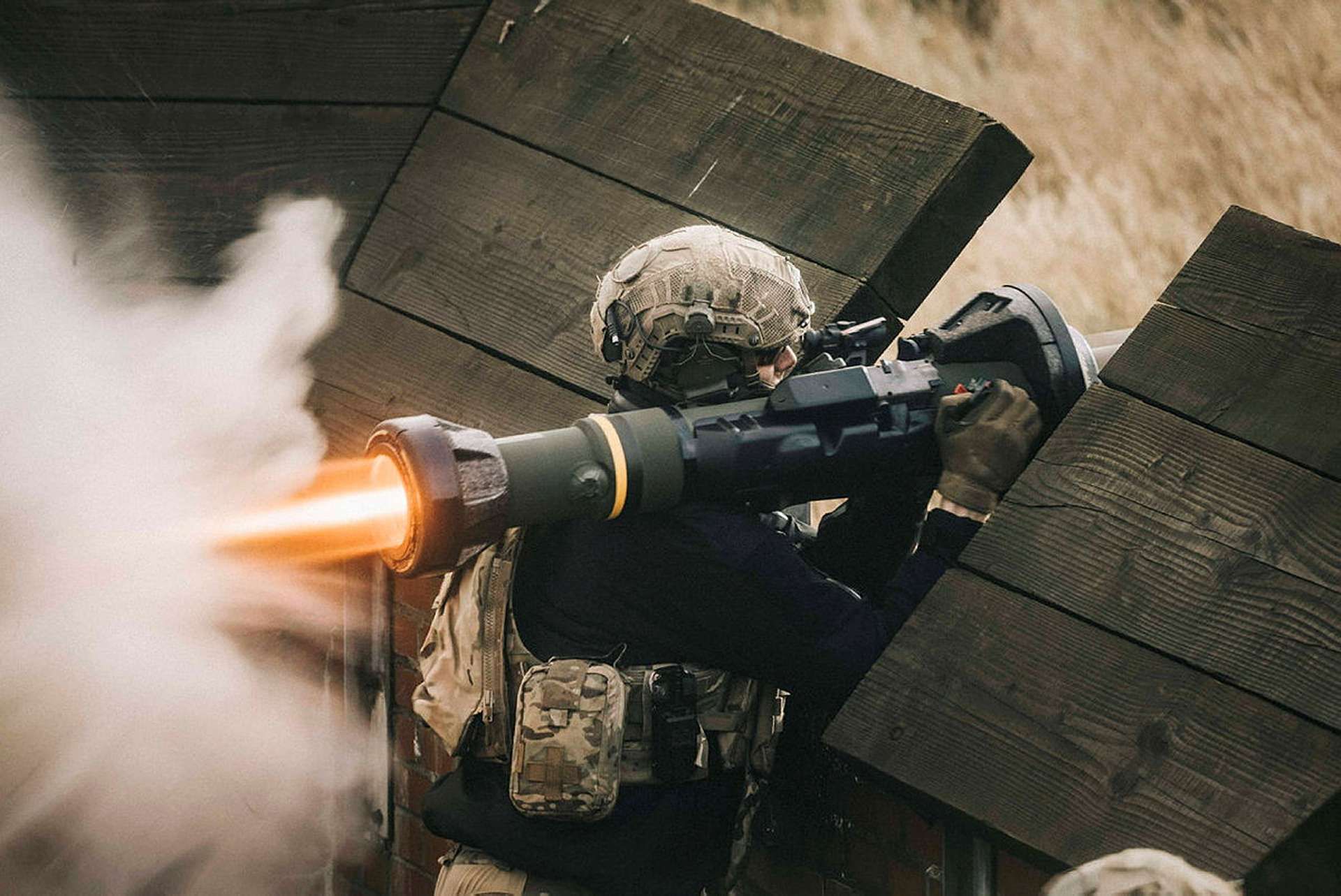Breaking News
French Army to replace French Eryx anti-tank missiles with Swedish NLAW by 2025.
As announced by Chief of Staff General Pierre Schill in June 2024, the French Army has decided to acquire the NLAW anti-tank missile. This interim solution is expected to be delivered next year, pending the development of a French short-range anti-tank system (ACCP). Designed by Sweden's Saab and produced in collaboration with Thales, the NLAW will be integrated into the forces by the end of 2025. This move will initiate the replacement of the ERYX missile, whose service life has been extended from 2023 to 2026. The specific quantities of munitions to be acquired have not been disclosed.
Follow Army Recognition on Google News at this link

The Next Generation Light Anti-tank Weapon (NLAW) was developed through a collaboration between Sweden and the United Kingdom to replace older anti-tank systems such as the LAW 80 and ILAW (AT4CS). (Picture source: Swiss MoD)
This new system aims to restore the coherence of the missile-rocket framework, which until now has relied only on the AT4F2 rocket and the AKERON MP missile. By procuring the NLAW off-the-shelf, the French Army quickly adopts a cost-effective interim solution, priced between €60,000 and €100,000, capable of filling the existing capability gap. Lightweight and with an effective range of 800 meters, the NLAW will support dismounted infantry in their anti-tank operations, according to Captain Dimitri, commander of the support company of the 13th Alpine Hunters Battalion.
As explained in the French infantry periodical 'Fantassins,' Pierre Schill included the NLAW, a new short-range anti-tank missile, in the French Army to address modern battlefield challenges and ensure the infantry's effectiveness. Current conflicts, such as those in Ukraine and Gaza, demonstrate the crucial role of infantry in holding positions, guiding strikes, and conquering urban areas. Schill highlighted the need for enhanced support and capabilities within the infantry, including electronic warfare, cyber capabilities, and automated systems like drones and robots. By introducing the NLAW as a successor to the Eryx, he aims to improve the infantry's firepower and operational coherence, ensuring they can meet the demands of future combat scenarios effectively.
The French Directorate for Studies and Concepts Development (DEP) of the Infantry School is tasked with conducting studies on infantry combat units at all levels, from teams to regiments, to improve their effectiveness in combat. During the 2022-2023 cycle, the DEP reviewed the organization of the infantry regiment, resulting in the new “RI 2030” model, which was presented at the National Infantry Days (JNI) in October in Draguignan. Understanding this new model requires placing it in its French and international context. The principles of this transformation become evident, though no model can perfectly fit all infantry regiments, and adaptations are anticipated.
The Russian invasion of Ukraine on February 24, 2022, marked the return of high-intensity warfare in Europe, highlighting the strategic vision of the Army Chief of Staff (CEMAT) presented in April 2020, which emphasized preparing for major engagements. This conflict led to the early development of a new military programming law (2024-2030) to enhance defense capabilities. The infantry's transformation aligns with these changes, focusing on reinforcing human resources in certain operational functions and transferring significant personnel from the infantry to these other functions. This restructuring involves the removal of certain positions and the reorganization of support roles within the infantry regiments.

The ERYX, on the other hand, has a shorter effective range of 50 to 600 meters but can penetrate up to 900 millimeters of armor. (Picture source: UK MoD)
Currently, each rifle company of a French infantry regiment includes an anti-tank squad equipped with short-range ERYX systems and 84mm AT4CS rockets to address light armored threats. The rifle companies’ fire support platoon, equipped with mid-range AKERON MP missile systems, can engage targets up to 4,000 meters away. Additionally, the direct fire support platoon within the support company includes specialized squads equipped with AKERON MP systems, ensuring the regiment's anti-tank capabilities and managing the training and operational readiness of missile shooters.
The RI 2030 model includes the NLAW (Next Generation Light Anti-tank Weapon) to enhance the direct fire support capabilities of infantry units. This structure allows for more effective and dispersed anti-tank capabilities and found its inspiration from the Ukrainian conflict, where anti-tank systems played a crucial role in countering Russian armored threats. The NLAW will be part of the anti-tank platoon (SAC) of the Support Company, which will consist of sections equipped with both AKERON MP and NLAW missiles. In combat companies, anti-tank weapons will be distributed among combat sections to increase versatility and flexibility. This distribution aims to create a more robust and adaptable infantry force, capable of meeting modern battlefield demands, and highlights the importance of the NLAW in improving the infantry's combat effectiveness.
The RI 2030 model also emphasizes the recreation of mortar units to strengthen indirect fire support. New 120mm mortar support platoons (SAM 120) are being established within the infantry as additional units, not transfers from artillery. These platoons aim to enhance the indirect fire capability of infantry units, which were previously limited to 81mm mortars. The SAM 120 units will be equipped with Serval vehicles to tow the mortars, while artillery counterparts will use Griffon MEPAC 120mm self-propelled mortar vehicles. Additionally, the 81mm mortar sections will be retained within support platoons to ensure comprehensive indirect fire support at both the regimental and company levels. This reorganization reflects the need for versatile and flexible support systems within the infantry, addressing the challenges of modern high-intensity conflicts.

The NLAW fire-and-forget guidance system and soft-launch feature allow for use in confined spaces, making it adaptable to urban combat environments. (Picture source: UK MoD)
The Next Generation Light Anti-tank Weapon (NLAW) was developed through a collaboration between Sweden and the United Kingdom to replace older anti-tank systems such as the LAW 80 and ILAW (AT4CS). Initiated in the early 2000s, the project aimed to create a lightweight, man-portable weapon effective at short to mid-ranges. Saab Bofors Dynamics, chosen in 2002 after a competitive bidding process, spearheaded the development. The NLAW combines elements from previous systems, leveraging Saab's experience with guided missiles and shoulder-fired weapons. Development continued until 2008, with the weapon entering production and service the following year. Since then, the NLAW has been adopted by several countries and has seen significant use in various conflicts, including the recent war in Ukraine.
The NLAW, ERYX, and AT4CS, in active or future service within the French Army, offer different anti-tank capabilities. The NLAW provides a versatile engagement range from 20 to 800 meters with both Overfly Top Attack (OTA) and Direct Attack (DA) modes. Its fire-and-forget guidance system and soft-launch feature allow for use in confined spaces, making it adaptable to urban combat environments. The NLAW can penetrate up to 500 millimeters of armor. The ERYX, on the other hand, has a shorter effective range of 50 to 600 meters but can penetrate up to 900 millimeters of armor. Unlike the NLAW, the ERYX is bulkier and lacks advanced guidance systems. The AT4CS is designed for close-range use with an effective range of 20 to 300 meters, mainly targeting light armor. It is simpler but less effective against modern main battle tanks compared to the NLAW. Overall, the NLAW offers a broader range and better versatility, particularly suitable for diverse and urban combat scenarios.


























